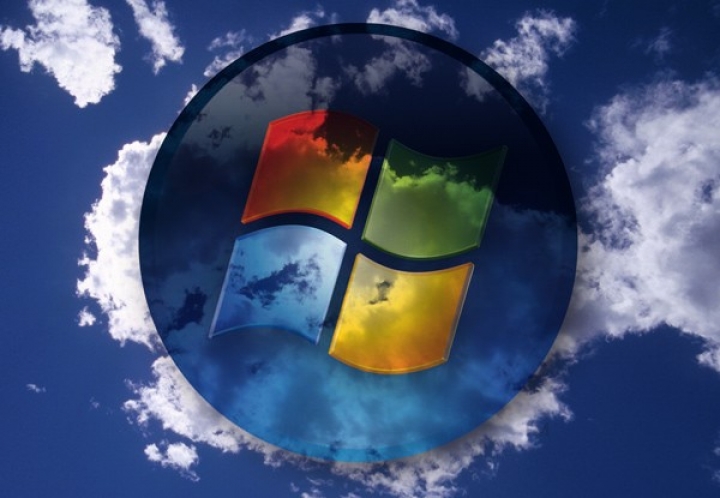Have you ever wondered about the history of computers? ENIAC (Electrical Numerical Integrator and Calculator) might’ve been the first computer, but it was not the first computer with the mouse and keyboard that we’re accustomed to. The question is when (and how) did it start? Back in 1984 when Apple launched the Macintosh, the need for competition emerged, and at that time Microsoft engraved its name in history by introducing ‘Windows’. This gave rise to one of the most infamous rivalries in history — Apple vs. Microsoft. Within a short time, Microsoft’s OS became a success — and not just an ordinary success; it gained a huge customer base and is still dominant throughout the IT world. So let’s go back in time and see how Windows made its way to your computer (unless you’re a Mac or Linux user!).
It all started with Microsoft Windows 1.0. The reason it was a success was due to the fact that it presented an alternative to the command-operated MS-DOS……a 16-bit GUI (Graphical User Interface). The competition back then consisted of those who provided a multi-tasking capable GUI for desktop computers. Windows 1.0 managed multitasking by tiling the Windows side-by-side. Windows gained little market share at first. Microsoft subsequently provided updates to Windows 1.0. Interestingly, Windows 1.0 required 1MB of total space. It sounds like a drop in the ocean of what Windows is today. Windows 1.0 was succeeded by Microsoft Windows 2.0, which included some enhancements. It also brought several new features, such as overlapping windows (ending the tiled approach to multitasking), customizations, keyboard shortcuts, maximize and minimize, and weighed merely 2MB. Within a year, Microsoft introduced Windows 2.1, which required a hard disk for installation. Here’s another fun fact. Apple filed a lawsuit against Microsoft, claiming that most of the features of the Macintosh operating system were copied by Microsoft in Windows 2.0. Yes, Apple had copyrighted the visual appearance of its operating system, and Windows was ‘inspired’ by it. No surprise, Microsoft has been copying (uh, I mean, been inspired by) Macintosh from the very beginning; and Apple has been suing copy cats ever since!
Times changed, Microsoft refined Windows even further, and in 1992 it brought Windows 3.0 to the world. It was far better, and included the control panel, notepad, paintbrush, and even the Solitaire game. Somewhere later in 1991, Microsoft also added multimedia (audio I/O) support because CD-ROM drives and sound cards had started becoming popular. In 1992 Windows 3.1 was introduced and featured a lot of improvements. Multimedia support was native, it included Internet Explorer and Minesweeper, and most importantly, it was distributed on CDs and floppy disks. Video playback was made available later as an add-on because Apple’s QuickTime was catching on, so Microsoft released it for free (drawing customers away from Apple’s $200 QuickTime). These small steps helped Microsoft gain more market share and break Apple’s customer base, and managed to get Microsoft to the place it is now.
In late 1995, Microsoft introduced something that has left its mark on all subsequent versions of Windows to date — Windows 95. It was a revolutionary change from previous versions. The next iteration of Windows should’ve been Windows 4.0, but MS named it Windows 95 (though Windows 4.0 was still used as the codename). It was based on a 32-bit architecture, featured plug-and-play support, even more customization options, and much more. It became one of the most famous desktop operating systems, and most of the credit goes to the marketing that Microsoft carried out for it. The Start Menu and Taskbar (still a quintessential part of modern versions of Windows) made their first appearance in Windows 95. Microsoft released add-ons as well, so Internet Explorer and The Microsoft Network (later known as MSN) were soon brought to Windows 95, alongside internet connectivity via dial-up networking. As the OS became more complex, so did the problems. So Microsoft included the Disk Defragmenter, a utility to speed up file access from the hard disk and remove ‘fragmentation’. Later in 1998, the successor to Windows 95 was unveiled — Windows 98. It was another major release, and included more internet and network- friendly features such as Internet Explorer 4, Outlook Express, NetMeeting, enhancements to the TCP/IP system etcetera. It also gave rise to the Quick Launch bar, animated menus, as well as customizations like desktop themes, wallpapers, sound and screensavers. Windows 98 included better support for USB and plug and play devices. Microsoft released an updated in 1999, known as Windows 98 SE, and brought about several improvements and new features, including an updated Windows Media Player.
The ’90s ended with the introduction of Windows 2000. This version of Windows brought further improvements over Windows 98, including new accessibility options, upgrades to existing features, better language support, more games, improved support for USB mass storage devices etcetera. However, Windows 98 remained as the most widely used Microsoft operating system. Pretty soon, Windows Me (Millennium Edition) was released. Although it had several minor improvements, it didn’t get that much customer attention or positive feedback. Users had compatibility and stability issues. This led Windows Me to be known as the “Mistake Edition”, due to the quality of the OS.
Soon Microsoft realized it was time for a drastic change, a shift into a new era. Just like Windows 95 gave users a new insight into the operating system (and put an end to Windows 3), a new version of Windows was required to make users switch from their old operating systems. Hence, Windows XP was released in late 2001. The XP’ in the name stands for a brand new user ‘eXPerience’. It was so successful that it became the second most popular version of Windows. It was a major redesign, but in such a way that existing Windows users didn’t have any problems upgrading and getting used to it (even I was blown away when I installed it on my Pentium II). It required minimal hardware, and even Windows 98 users with old hardware could upgrade to it. To be specific, a 300MHz processor, 128MB RAM, and just over 2GB of hard drive space was required to make it work (efficient working required more powerful hardware though). Windows XP had a brand new look and feel, and featured impressive visual effects. The list of new and improved features goes on and on. Apart from graphical changes, several performance changes were also seen. It became one of the most widely used operating systems. Over time, Microsoft released Service Packs (SP) for Windows XP to carry out major updates, and patch loopholes which could be exploited. SP3 was the final service pack to be released. Windows XP also brought online product activation, but in the age of piracy it didn’t stand a chance, and pirated copies of Windows XP were readily available. Putting the success of Windows XP aside, it also left several users angry and frustrated. Windows XP was highly susceptible to viruses, malware, trojans, and all that bad stuff. A good antivirus became everyone’s requirement. This is where Apple attacked and gained a huge customer base by claiming that their computers (Macs) don’t get viruses. They even ran a campaign named Get a Mac’, intended to lure people into getting a Mac computer. Apple already had a lot of dedicated customers, but it also attracted those who were dissatisfied by Windows XP. Microsoft’s attempt to fix the security vulnerabilities showed up in the next release of Windows in 2007, called Windows Vista. Vista was an eye-candy OS, with glassy effects (known as Aero), animations, refined search, and security enhancements. Initially, users faced problems (and found it irritating) because upgrading from XP to Vista was inconvenient — Vista had some special (high-end) hardware requirements, mainly due to the visually intensive GUI. But quite a while after its release, Vista managed to surpass XP’s market share by becoming the second most widely used OS.
After all this, Microsoft decided to present its users with another OS. It was named Windows 7, and is currently the latest OS by Microsoft. It had a similar (but improved) look and feel as Vista, minus the annoyances, and demanded less powerful hardware. As for the customer reception, it became one of the most pre-ordered products, surpassing Mac OS X Snow Leopard’s market share in just two weeks, and attained a four per cent market share in just three weeks (compared to Vista, which took seven months to achieve four per cent). As of now, it is one of the most widely appreciated versions of Windows. It includes a refined taskbar, improved performance, and many new features. If you’re a PC user and not running Windows 7, then you’re missing out. Well, unless you’re running what’s going to be mentioned now, i.e. the upcoming version of Windows (to be released this month, alongside the ‘Surface’ tablet). It’s called Windows 8, and basically has two parts. A ‘modern UI’, optimized for touch devices, but there’s nothing wrong with using it on a PC; the other part is the one we are all familiar with — the desktop (similar to the Windows 7 desktop). Compared to Windows 7, the taskbar, Windows explorer, and many other things have been redesigned. Once it comes out, you can upgrade from Windows 7 very easily. And that’s where we stand. Microsoft has brought Windows to touch-based devices alongside the other competitors (i0S and Android). Where will this race be headed in the future? We don’t know for sure. But the way Microsoft is working is pretty impressive, and it might come and stand at par with its competitors.





The ENIAC was always the “Electrical Numerical Integrator and Computer” (or “Computor”, to go by the nameplate on the machine itself), not “calculator”. For some reason, some insist on trying to rename it a “calculator”, but that’s no service to history.
The ENIAC was always the “Electrical Numerical Integrator and Computer” (or “Computor”, to go by the nameplate on the machine itself), not “calculator”. For some reason, some insist on trying to rename it a “calculator”, but that’s no service to history.